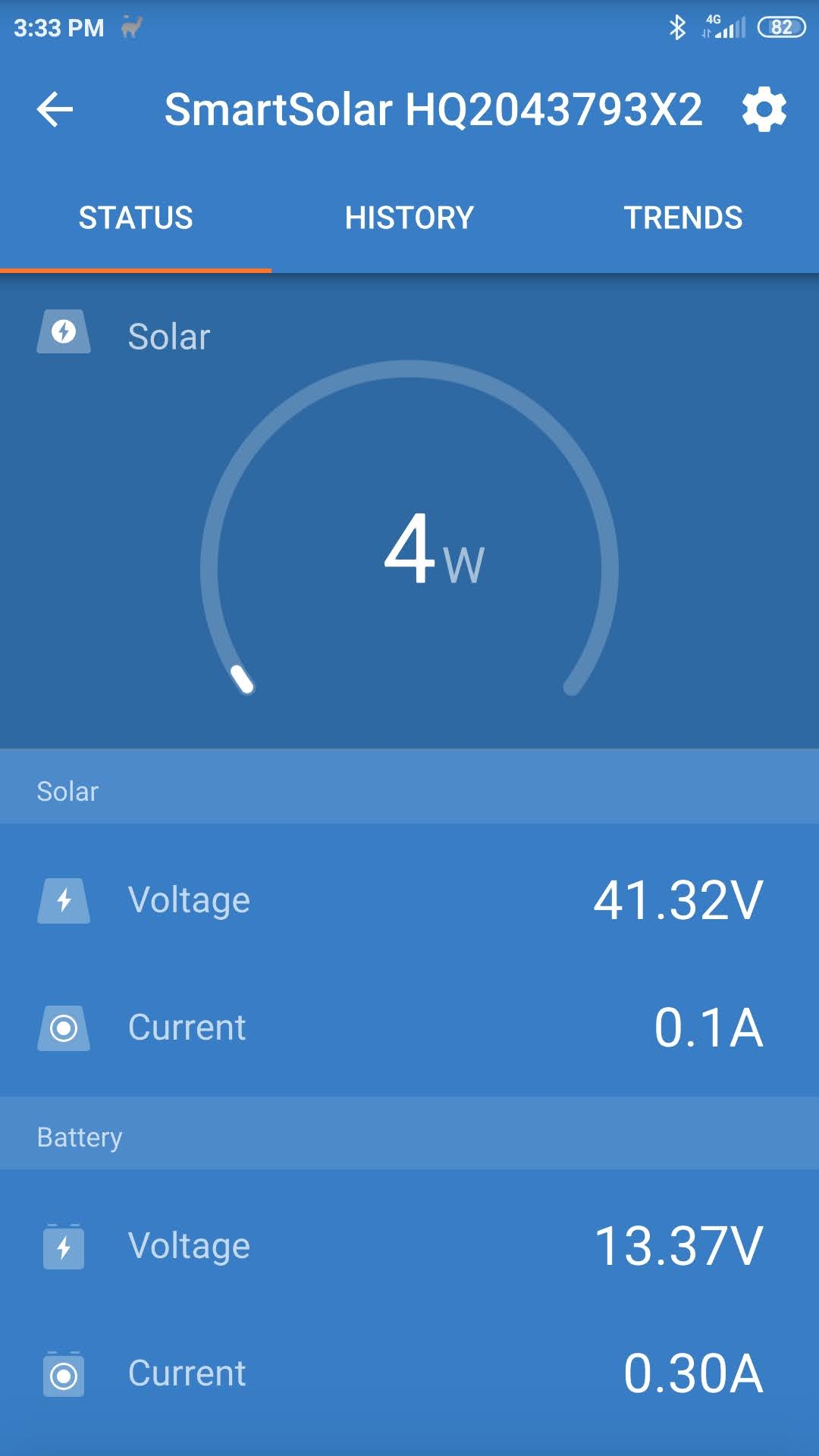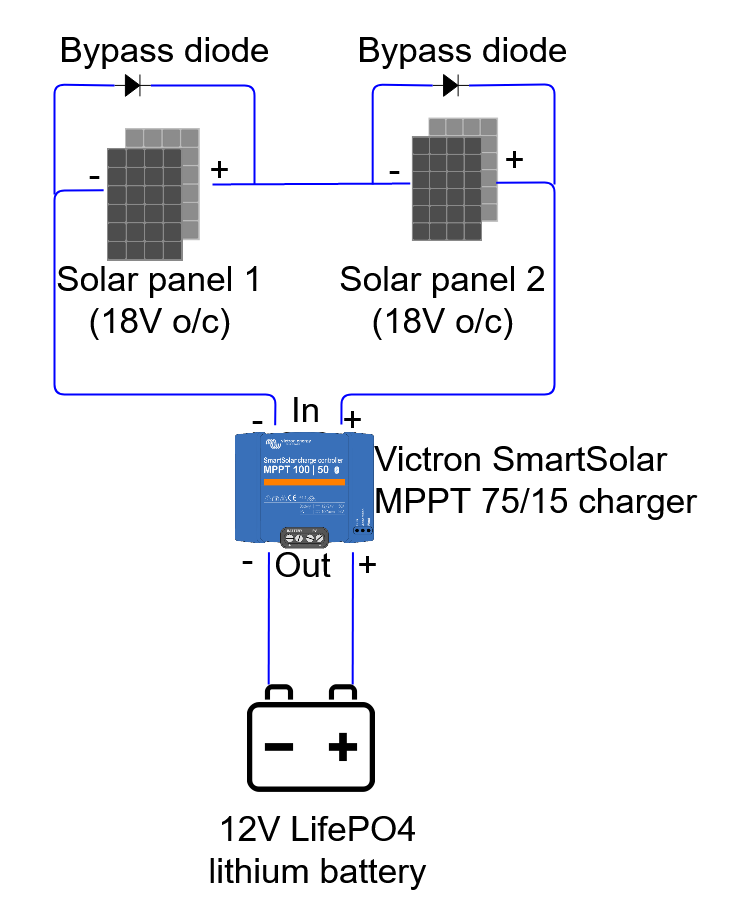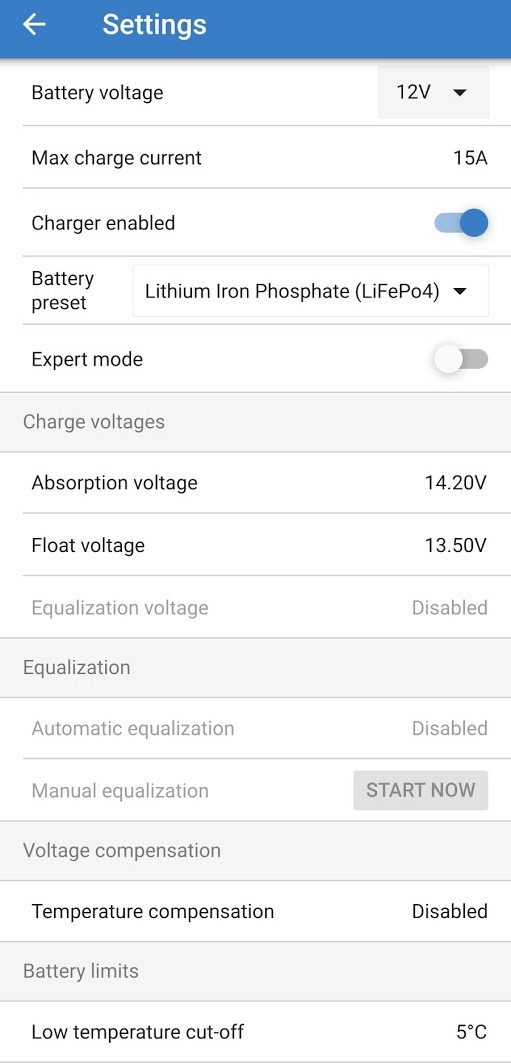I've got a 160W portable solar panel feeding a Victron SmartSolar 75/15, which charges a 12V LifePO4 lithium battery (with its own battery management system).
I've rewired the solar panel in series to reduce voltage drop over a long extension, so that it now has an open circuit voltage of 44V, and an operating output of 36V and 4.4A. The panels have bypass diodes so I believe that should help with shading. If I shade one panel then it should have an output of 18V and 4.4A.
It works fine sometimes. But other times if I just partly shade one panel the SmartSolar app shows its input is around 40V, but the current is only 0.1A. I thought maybe the SmartSolar has a delay in making a change, for some reason, but I've watched it for over a minute and it doesn't improve.
Can anyone explain what's going on here?



